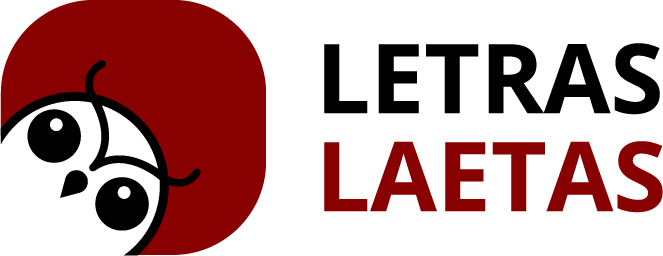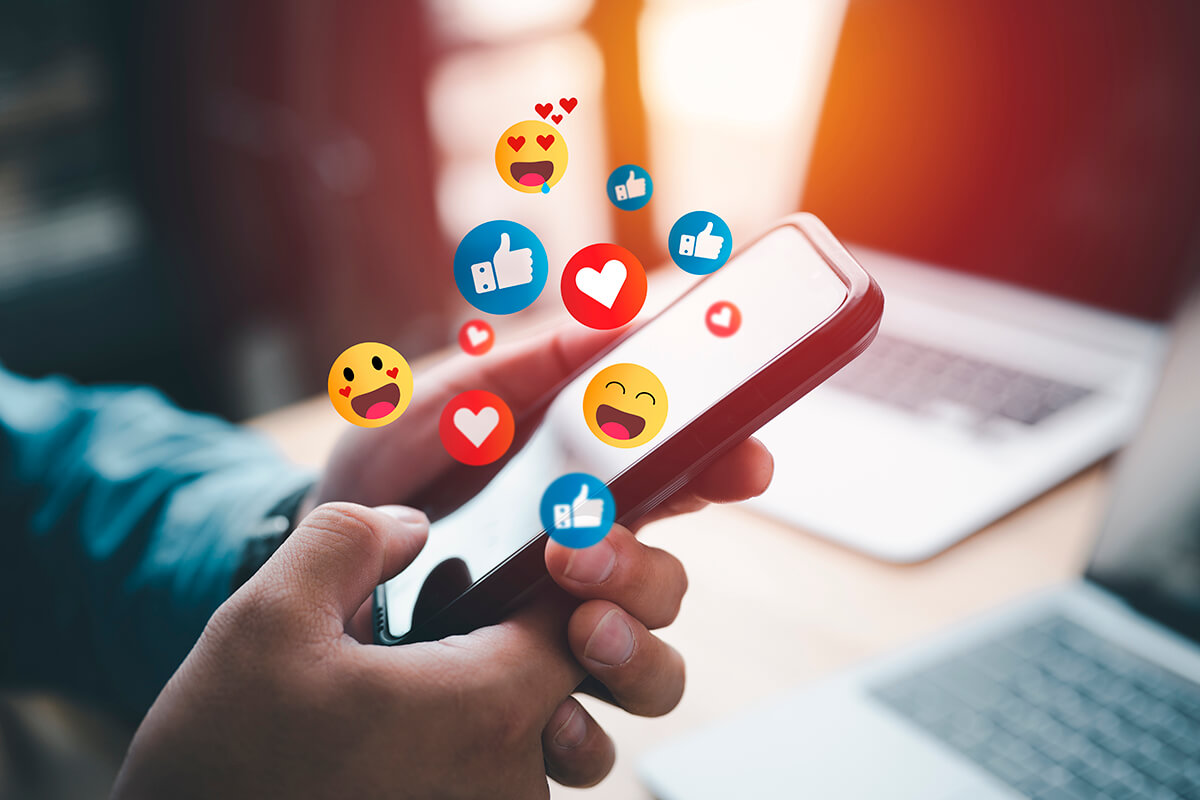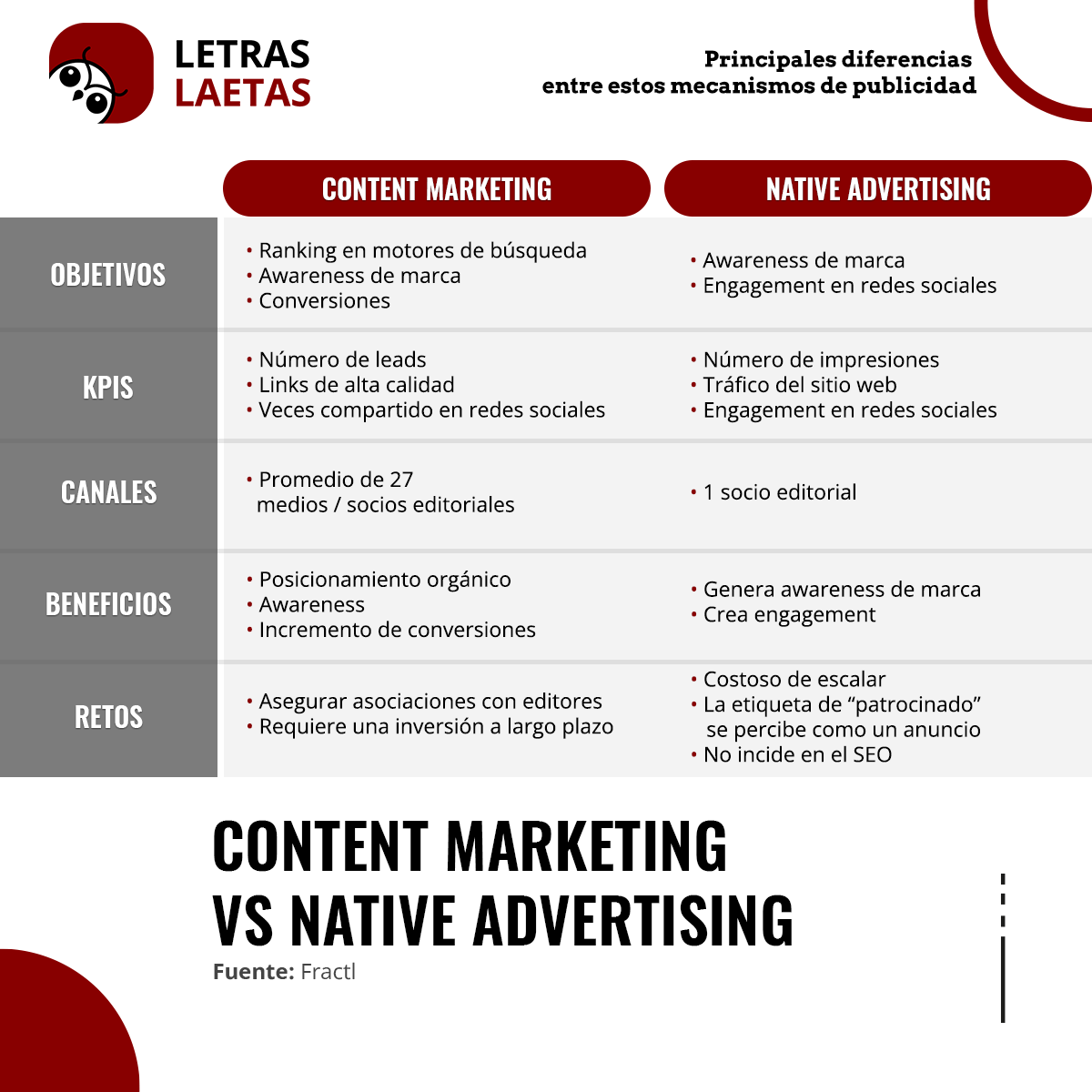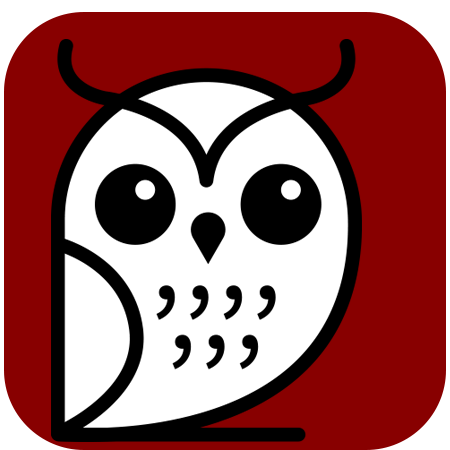One of the criteria that search engines consider to show you in their first positions is the number of mentions and the quality of links that point to your content. Although other factors such as content per se influence SEO, in a highly competitive environment, in the jungle of the web, it is not enough to have unbeatable content. It is necessary to give it greater visibility by disseminating it through all the mechanisms at our disposal… Having said that how to obtain mentions in the media organically?, is it possible? In this entry, we talk about:
Content marketing and native advertising
Content Marketing and Native Advertising. These are two different mechanisms to give greater visibility to content on the web. The first is based on publication in own media, while the second is done in paid media.
Publications in own media
Content marketing works with the brand’s or company’s own media in question. Examples of own media are:
- The company website
- Su Corporate Blog
- The company’s social media
- Magazines or publications owned by the brand
The main benefit is the cost of publishing this content. You don’t have to pay an external media to do it. Generally, the writing services are in charge of people from the same company. Definitely helps with the company’s web positioning.
One downside might be that from a public relations, standpoint, it’s not always viewed favorably for a company to brag about how good it is, particularly when it has experienced some controversy. In these cases, it is always better for third parties to intercede for the brand and speak well of it. However, these mentions cost. We will talk about it below.
Paid media publications
Native advertising works with paid media. This means media that do not belong to the company and for whose mentions you must pay. Its great benefit is that the Internet user less seasoned in these issues, does not perceive it as advertising.
The dream of every content creator is that what they have communicated is so relevant, that people share it and talk about it. What content creator wouldn’t want to go viral organically? This is not as easy as it seems and sometimes the posts that go viral have gone through a public relations agency that helps influencers share and talk about certain topics, brands or content.
Trap? Of course not. It’s a public relations strategy that has been around forever, only in the digital age it has acquired nuance and relevance. Some examples of paid media can be:
- Influencers
- Mentions in magazines (usually, but not always, indicate that said publication is paid for)
- Mentions in mass communication media (radio, television)
- Promoted posts on social media such as Facebook, Twitter, Instagram, LinkedIn, among others
Even a form of advertising can be the placement of the product in movies, series, among others, such as YouTube channels. As such, it is “masked advertising”. With the rise of the Internet, companies began to realize that the new generations (starting with millennials) paid more attention to the people they followed on social networks than to the commercials they saw on television. In this way, native advertising has gained popularity among marketers.
Mentions in earned media
If the company publishes relevant content on its communication channels, it is likely that other people will follow and share it and even mention it. These mentions are known as earned media. They can be word of mouth, recommendations on social networks or quotes on their own channels, for example, a link from their blog to one of our content that they have found interesting. This is achieved through a good content and media strategy.
Brand reputation
Just as the dream of content creators is to go viral organically, the nightmare of brands is to go viral because of a controversy related to their company. And it is that now the news spreads so quickly that they do not give much margin of time to react to a contingency. When we talk about a crisis and brand reputation, we think about three types of actions:
- Preventive actions. For example, when a contingency plan is made on social networks, which details the possible crises foreseen and who is responsible for responding.
- Corrective actions. A correction, according to the ISO 9000:2000 Standard, is defined as the set of activities carried out to eliminate or correct what has not gone well. In the case of consumer companies, they may have to recall or reprocess some product and compensate potential aggrieved parties.
- Reactive actions. The person in charge of managing the crisis must make decisions that positively impact the brand. For example, the company may (or may not) give an official position and this is when third parties may also be helped by interceding for the brand or the person whose reputation is at stake, and present mitigations for the situation they experienced. It is worth mentioning that “doing nothing” is also a reaction that can even be much more eloquent than other actions.
Paid Media Examples
Without being exhaustive, these are some examples of media in which mentions can be bought. We will only talk about the digital sphere and we will leave aside the mass media. Some examples are digital magazines and web portals, influencers and link building.
Digital magazines and web portals
The Alexa portal, from Amazon, was public until 2022. It showed the global ranking of the websites with the highest traffic, which you could filter by country. Also Google, until a few years ago, publicly displayed an algorithm called PageRank, which rated the relevance of a website:
PageRank works by counting the number and quality of links to a page to determine a rough estimate of the importance of the website. The underlying assumption is that the top websites are likely to receive more links from other websites.[1]
Although these tools are no longer available to the general public, the truth is that certain means of communication are more relevant than others. Based on factors such as the traffic they receive, the audience that reads them, the authority of their domain and, in general, the prestige they enjoy, the media establish various rates to make a mention. It is very difficult for these mentions to occur organically if it is to favor or promote a specific product or service, and when they do happen, they are so extraordinary that they make news.
Influencer marketing
Influencers are classified by the size of their audience or number of followers and also by the topics they talk about. Other important criteria when hiring an influencer are the age ranges of their followers. They are people who have a certain credibility and whom others follow, listen to and imitate. Their communication channels are usually their own social networks.
Influencers can be found through their networks and approached directly, but the most professional and with larger audiences work with a representative or an influencer, public relations or digital marketing agency. In accordance with Social Mood, influencers can be:
- Micro-influencers: When they have from a thousand to 100 thousand followers
- Mid-influencers: From 100 thousand to 500 thousand followers.
- Macro-influencers: From 500 thousand to 1 million followers.
- Celebrities: More than 1 million followers.
It should be noted that currently there are platforms to buy followers, so these numbers are not always true. Another thing that should be noted is that influencers can organically recommend or, on the contrary, speak ill of a brand or a product. For this reason, micro-influencers can sometimes agree to make mentions of a brand, product or service in exchange only for the product in question or for living an experience.
The types of mentions they can make range from stories that are deleted after 24 hours, permanent posts on their social networks, product placement in their videos, or dedicated content for a particular brand. Fees can range from just receiving the product for free to hundreds of thousands for a video or mention.
Link building… organic or paid?
Link building is an SEO technique, which consists of building links that point to certain content, with the purpose of being considered relevant by search engines. There are many strategies to achieve this, some of them belong to what has been called white hat SEO and others to what is known as black hat SEO.
White hat strategies for link building
-
- Backlinks. A person links to another person’s website or blog. As a reward, if the content displayed by said site is relevant to the readers of the person who receives the link, they are compensated with another link back. Sometimes it is requested directly, the SEO specialist contacts the owner of a website and requests a link. Normally, among bloggers, this practice does not have a monetary cost.
- Social networks. Having social networks and regularly posting the links of a website on them is a way of getting links and organic traffic. It can be done in own media or in the so-called outlets. These are Fanpages or third-party networks who are paid to link and advertise content. Some of these outlets are pages of fictional characters inspired by movies; others are pages or Fanpages that simply publish news related to an ideological current.
- Discriminated purchase of links. The SEO specialist searches for relevant portals that have to do with the contents of the site or medium for which he works, and requests a link in exchange for a monetary exchange. The link can come within the body of a text or through a banner. This is different from the indiscriminate purchase of links through portals that have nothing to do with the content in question. It requires investigation of the website from which the link is purchased, since the audience of said site must find the website to which it is redirected relevant.
- Forum mentions. These Internet platforms have formats such as questions or answers, whenever relevant, a link can be placed to products or services that solve the problem of the person asking the questions.
Black hat strategies for link building
It should be noted that these are NOT recommended practices, which are penalized by companies like Google. It consists of a series of techniques that try to deceive the search engine algorithm to make it believe that a page is relevant and with that, favor its positioning. Although it may work for a short period of time and show false growth in metrics, it is penalized and should not be used as an SEO strategy.
- Indiscriminate purchase of links. Through websites that offer other pages to cite content. These pages, even if they place the link, are not relevant websites for the potential audience of a brand.
- Use of robots that send messages or post comments. They are programs that look for websites where responses can be posted, and leave an undifferentiated comment with things like “I found the note very interesting and now I invite you to visit (link)”. These types of comments are SPAM and, although they can effectively generate traffic, it will not be quality traffic.
- Getting media mentions organically is hard work.
- Although the content itself influences the visibility and reach it will achieve, viralizing it will not happen magically.
- The media where mentions can be purchased vary in format and scope. Their prices are determined by the prestige of the medium in question.
- Having your own media is, therefore, a good option for having a digital presence.
Does your company not have a digital ecosystem yet? Learn more about our website development and content marketing services. Don’t pay for the medium, create it 😉



